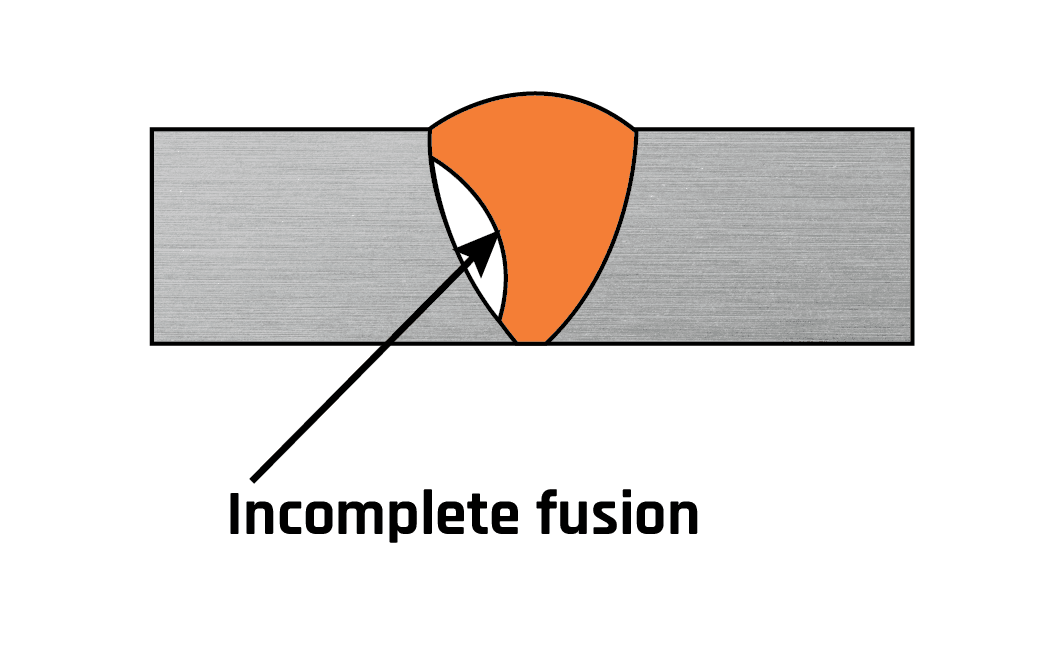Your Full Manual to Preventing Weld Undercut Like a Pro
Your Full Manual to Preventing Weld Undercut Like a Pro
Blog Article
Recognizing the Causes and Solutions for Undercut Welding in Steel Manufacture Procedures
In the world of steel construction procedures, the incident of undercut welding presents a considerable difficulty that demands a detailed understanding of its causes and practical services. The elaborate interplay of various elements during welding procedures can bring about this unwanted sensation, affecting the structural integrity and overall quality of the bonded joints - Preventing weld undercut. By studying the source of undercut welding and exploring reliable therapeutic procedures, producers can elevate the criterion of their handiwork and make sure the production of flawless steel elements
Common Root Causes Of Undercut Welding
Regularly ignored in metal fabrication, undercut welding occurs because of numerous aspects that require meticulous interest and expertise to be properly mitigated. One usual root cause of undercut welding is extreme warm input. When the warmth input is too expensive, it can lead to the melting and subsequent disintegration of the base product along the sides of the weld joint, creating a groove or undercut. Furthermore, improper welding methods, such as utilizing the wrong welding angle or take a trip rate, can likewise add to damage formation. Poor protecting gas protection is one more key aspect that can result in damaging. Not enough gas protection fails to secure the weld swimming pool appropriately, resulting in oxidation and undercut issues. The selection of welding parameters, such as voltage, present, and cord feed rate, plays a significant function in the incident of undercut welding. Understanding these typical reasons is crucial for executing safety nets and making sure high-quality welds in metal construction procedures.
Influence of Incorrect Welding Parameters
Incorrect welding criteria can significantly jeopardize the stability and top quality of welded joints in metal construction processes. The influence of incorrect welding parameters materializes in different means, leading to architectural weaknesses and defects in the welded elements. Careful focus to welding criteria is vital to guarantee the production of premium welds with the wanted mechanical properties and structural integrity.
Effect of Improper Lantern Angle
Improper torch angle in welding operations can significantly impact the quality and integrity of the final weld joints in steel manufacture procedures. The lantern angle plays an important function in establishing the warmth input and circulation throughout welding. When the torch angle is incorrect, issues such as undercutting can arise. Damaging is an usual welding defect where a groove develops along the weld toe, damaging the joint and compromising its architectural stability.
A torch angle that is too high can cause inadequate penetration, insufficient combination, and enhanced spatter. On the other hand, a lantern angle that is too superficial can lead to excessive infiltration, burn-through, and distortion of the base product. Preventing weld undercut. Proper lantern angle is necessary for making sure consistent weld top quality, stamina, and appearance
To stop damaging and other defects triggered by improper lantern angles, welders should be educated to preserve the correct lantern angle throughout the welding process. Normal tracking and change of lantern angles during welding can aid accomplish audio welds with very little defects.
Function of Inadequate Welding Techniques

An additional facet of poor welding methods is incorrect weld preparation. Poor cleansing of the base metals, incorrect joint design, or insufficient side preparation can all contribute to undercut i was reading this welding. Moreover, inadequate securing gas insurance coverage or making use of the incorrect kind of gas can result in incomplete blend and the development of undercut problems.
To address the duty of insufficient welding techniques in steel construction processes, it is necessary to provide thorough training for welders. Appropriate education on welding specifications, joint prep work, and securing gas choice can help stop undercut welding and guarantee high-quality welds in steel fabrication tasks.
Efficient Solutions for Undercut Welding
Addressing undercut welding in steel fabrication needs implementing efficient solutions to improve weld quality and architectural honesty. One of the key services to battle undercut is to change welding criteria such as voltage, current, and take a trip rate to guarantee appropriate heat input and combination. By fine-tuning these setups, welders can avoid too much melting of the base metal and filler material, lowering the likelihood of undercut formation.
In addition, proper joint preparation is critical in avoiding undercut. Making certain tidy base metal surfaces devoid of contaminants and utilizing the ideal bevel angle can help promote much better weld infiltration and reduce the risk of undercut - Preventing weld undercut. Utilizing appropriate welding strategies, such as weaving or oscillating the torch, can additionally assist in distributing heat uniformly and filling up the weld joint adequately, lessening the opportunity of undercut issues
In addition, selecting the appropriate welding consumables, consisting of electrodes and filler steels, is necessary in reducing undercut. Using products with appropriate chemical compositions and mechanical residential properties can add to achieving sound welds with very little undercut. Routine inspection and quality control steps ought to also be executed to discover and deal with undercut problems quickly, guaranteeing the overall integrity of fabricated steel parts.

Conclusion
To conclude, recognizing the reasons and options for undercut welding in metal fabrication processes is critical for attaining high-grade welds. By resolving typical causes such as incorrect welding parameters, improper lantern angle, and insufficient welding techniques, welders can prevent damaging and make sure strong, sturdy welds. It is vital to take notice of these elements and implement reliable services to improve the total welding procedure and end product high quality.

Report this page